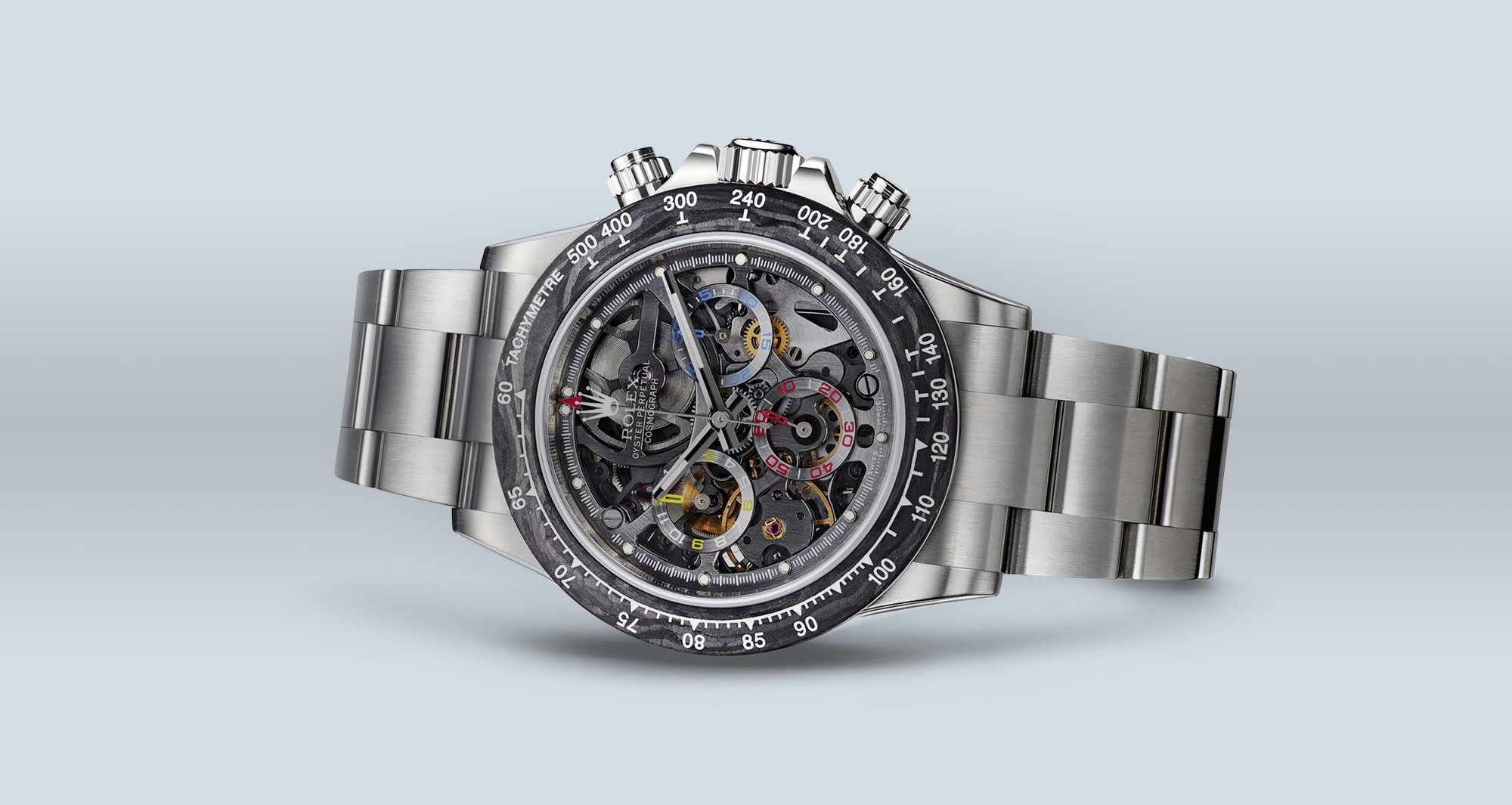
Sulle spalle dei giganti
L’arte di reinterpretare le grandi icone dell’orologeria
“Siamo come nani sulle spalle di giganti”. È la frase, epocale, del filosofo francese Bernardo di Chartres, vissuto nella prima metà del XII secolo. Il senso è positivo, perché così, continua lui: “possiamo vedere più cose di loro e più lontane, non certo per l’acume della vista o l’altezza del nostro corpo, ma perché siamo sollevati e portati in alto dalla statura dei giganti”.
Quella di Bernardo di Chartres è una frase epocale perché rappresenta, in estrema sintesi, la speranza della società occidentale verso il progresso costante, nei secoli dei secoli. Ed è anche una frase perfetta per descrivere uno dei trend più in voga nell’orologeria mondiale: quello delle personalizzazioni.
Nel mondo delle automobili la personalizzazione è un fenomeno ormai storicizzato, con la californiana Singer Vehicle Design che “reimmagina” le Porsche 911 originali degli anni Settanta, rendendole ancora più iconiche – e ricercate dai collezionisti – delle originali non modificate. Per non parlare delle vecchie Defender di Land Rover che contano migliaia di garage – tanti anche in Italia – che le riportano a nuova vita, con motori performanti e allestimenti da nababbi. Nell’orologeria d’alta gamma, invece, questo è un fenomeno tutto sommato recente, anche perché è sempre stato ostacolato con tenacia dai marchi. Su tutti Rolex, i cui modelli sono usati come materia prima nella stragrande maggioranza dei casi: soprattutto il celeberrimo Daytona.

«Le personalizzazioni fanno breccia anche nel mondo dell’orologeria mondiale, ma tra le decine di realtà che si cimentano in questa nuova nicchia di mercato, sono pochissime quelle che apportano un reale valore aggiunto tecnico-estetico».
Michele Mengoli
In questo senso lo sdoganamento della personalizzazione è arrivato addirittura da una sentenza storica della Corte Suprema Federale Svizzera. A gennaio 2024 ha difatti stabilito che si possono personalizzare gli orologi su richiesta e per conto del proprietario dell’orologio, sottolineando un aspetto fondamentale: solo per uso personale e non commerciale. In sostanza è quindi possibile vendere un servizio di personalizzazione a fronte di una richiesta di un privato possessore di un orologio.
Va detto che oggi ci sono decine di realtà che si cimentano in questa nuova nicchia di mercato, ma con onestà sono pochissime quelle che come Singer con le Porsche 911 apportano un reale valore aggiunto tecnico-estetico. Nel vertice di questa “catena alimentare” abbiamo selezionato un podio a pari merito per le reinterpretazioni che riteniamo più riuscite – e inevitabilmente molto costose – del re del mercato: appunto il Daytona.
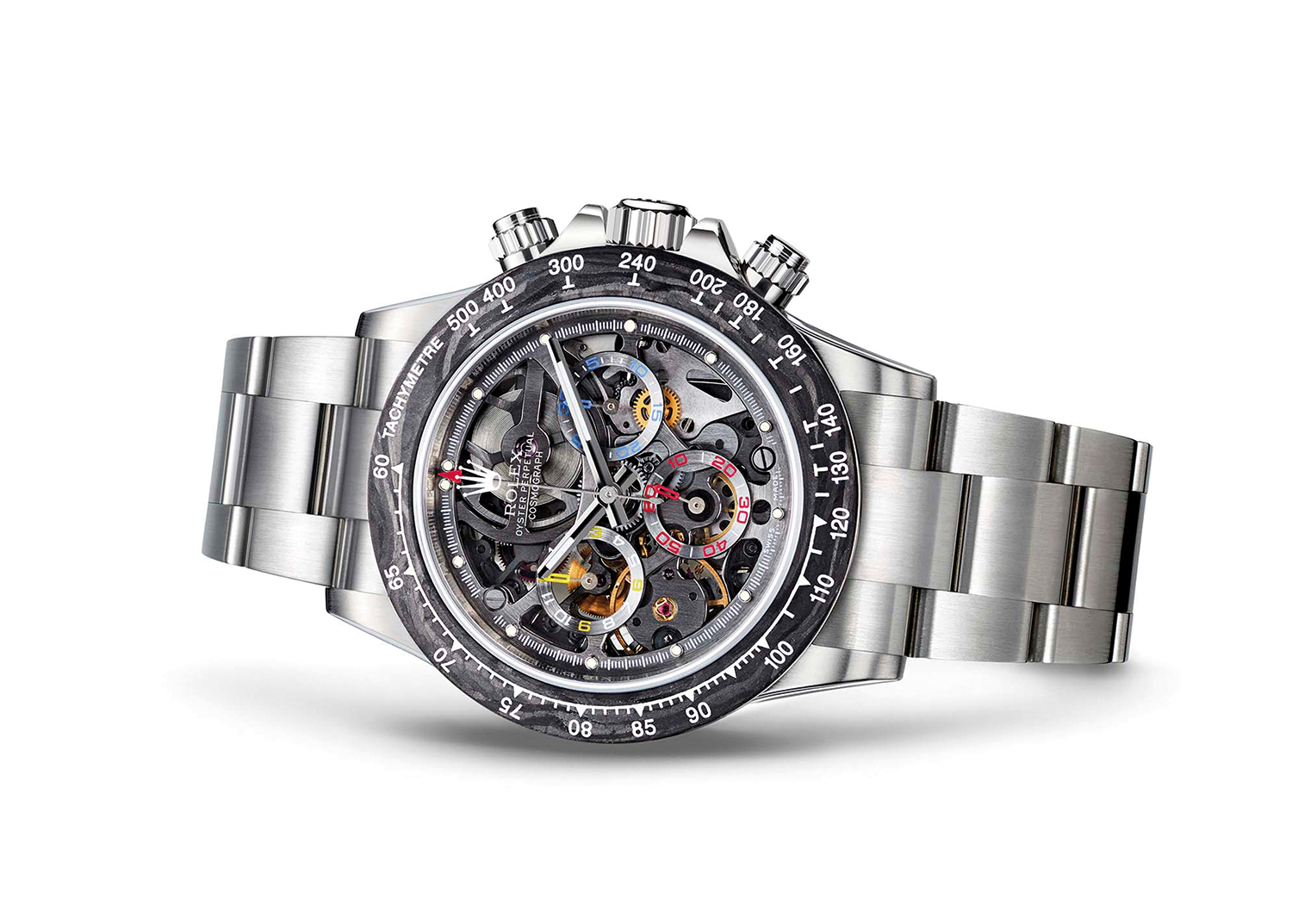
Artisans de Genève (in foto il modello La Montoya per il pilota Juan Pablo Montoya) – sul mercato (per molto tempo quasi di nascosto) dal 2005 – è oggi la marca più famosa, anche grazie a collaborazioni con celebrità trasversali: da Andrea Pirlo a John McEnroe, da Spike Lee a Lenny Kravitz. L’italiana Matt Spirit, con una attenzione al dettaglio vintage filologicamente maniacale, è arrivata da poco sul mercato, ma ha lasciato il mondo degli appassionati di stucco con il suo Le Mans Gulfblue (in foto), con potentissimo quadrante in smalto policromo e indossato alle aste ginevrine dello scorso maggio da Sandro Fratini, il più grande collezionista di orologi vintage al mondo.
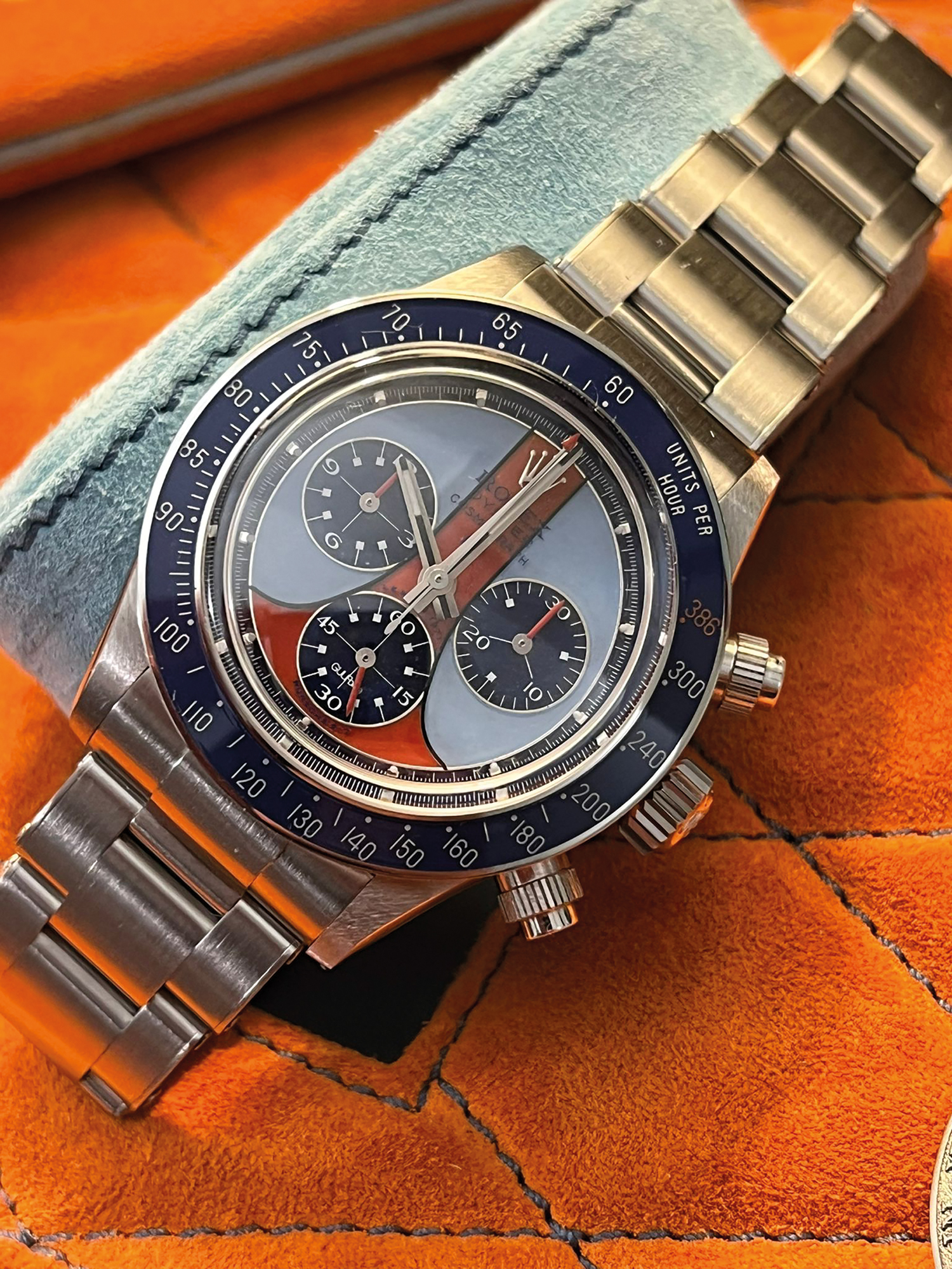
Poi c’è la tedesca Designa Individual Watch, che sostituisce le casse originali con casse in materiali compositi ultra-leggeri e quadranti molto innovativi (in foto il Rainbow Wild Green). Cosa accomuna questi tre marchi? L’idea di base è la stessa: dare una evoluzione qualitativa alla materia prima, che in questi esempi, lo ricordiamo, è uguale per tutti: un originale Rolex Daytona Ref. 116520 con relativo movimento originale di base, il Rolex 4130. Con un ulteriore plus: su richiesta del cliente studiano con lui la realizzazione di ogni suo sogno orologiero partendo da un modello originale d’alta gamma.
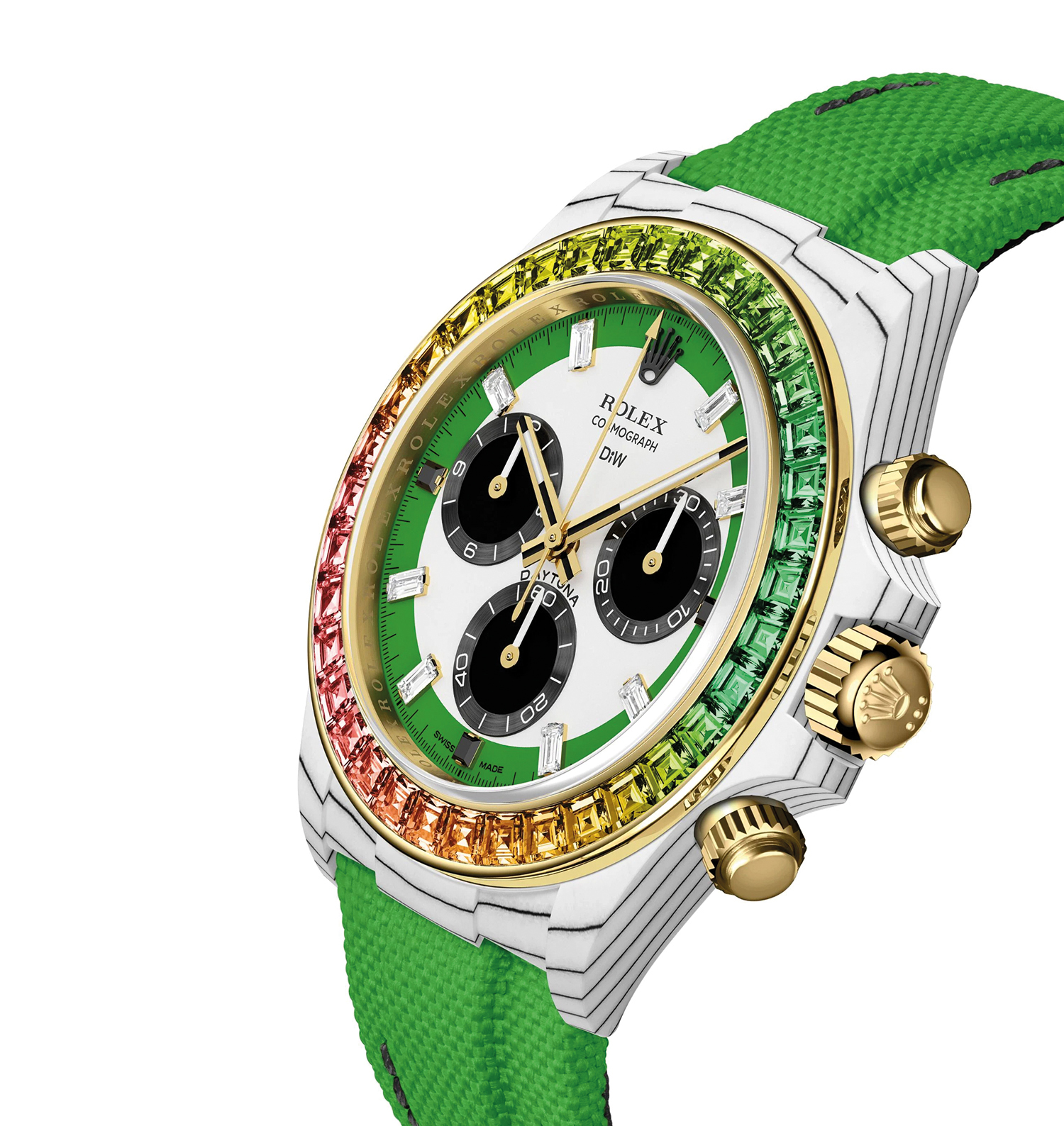
Oltre l’arte della personalizzazione degli orologi originali d’alta gamma, c’è un altro segmento estremamente interessante – anche perché propone orologi con prezzi di listino agli antipodi, ovvero che oscillano tra i 500 e i 2.500 euro. Anche in questo caso andiamo a vedere le migliori interpretazioni degli orologi più iconici al mondo: i Daytona d’epoca con quadrante Paul Newman.
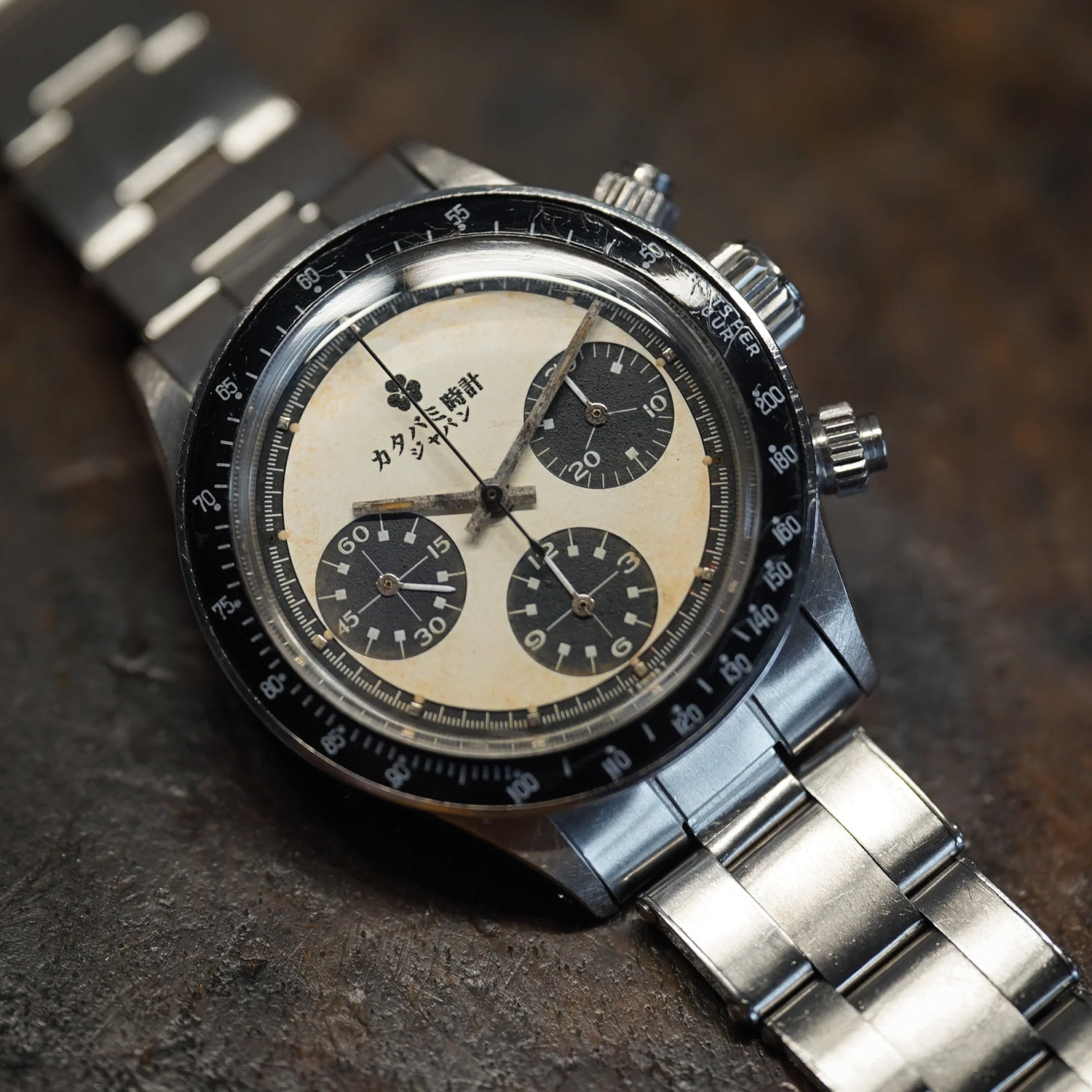
Va sottolineato che queste due marche – Katabami Watch Japan by Hayate A. e Watch Experimental Unit (W.MT Watches) – hanno il loro nome a ore 12 e, soprattutto, che non utilizzano la base originale Rolex come materia prima. Quindi i costi di partenza sono estremamente contenuti, anche perché utilizzano movimenti orientali, ma comunque affidabili e riparabili dagli orologiai professionisti delle nostre città.
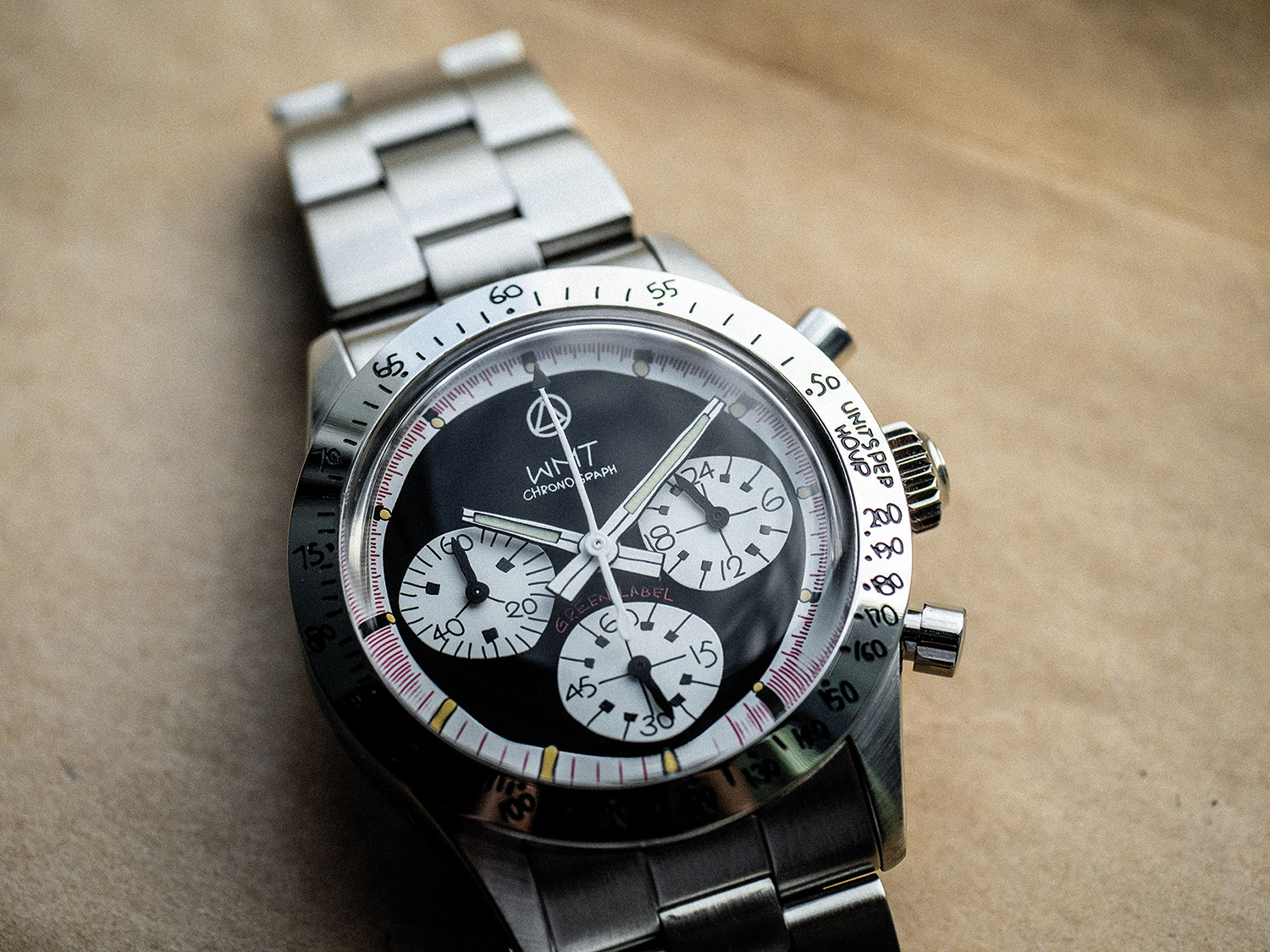
Lo Shiro di Katabami (2.500 euro), con cassa di 36,5 mm, vetro acrilico e movimento manuale, ha un riuscitissimo effetto vintage fatto a mano e persino personalizzabile su richiesta del cliente. Mentre W.MT, che offre un omaggio fedelissimo al Paul Newman con il suo Montana (1.450 dollari, cassa di 37,5 mm, vetro acrilico e movimento automatico Seiko NE88), ha da poco proposto nella collezione Green Label una sua versione ironica del Paul Newman, il GP10020C. La particolarità la vedete nella foto: quadrante e lunetta sembrano disegnati a mano (prezzo di 475 dollari, movimento al quarzo, cassa di 37 mm e 100 metri di impermeabilità).
Questi ultimi due sono gli orologi perfetti per chi vuole sdrammatizzare lo status symbol dell’orologeria di lusso; invece i primi tre sono ideali per chi non si accontenta e vuole fare un giro “sulle spalle dei giganti”!
On the shoulders of giants
The art of reinterpreting the great icons of watchmaking
We are like dwarfs on the shoulders of giants.” This is the epoch-making phrase of the French philosopher Bernard of Chartres, who lived in the first half of the 12th century. The meaning is positive, for thus, he continues, “we can see more things than they do and farther than they do, certainly not because of the acumen of our sight or the height of our bodies, but because we are lifted up and carried aloft by the stature of giants.”
Bernard of Chartres’ is an epoch-making phrase because it represents, in a nutshell, Western society’s hope for steady progress through the ages. And it is also a perfect phrase to describe one of the hottest trends in world watchmaking: that of personalization.
In the automotive world, customization is a now-historic phenomenon, with California-based Singer Vehicle Design “reimagining” the original Porsche 911s of the 1970s, making them even more iconic-and sought after by collectors-than the unmodified originals. Not to mention Land Rover’s old Defenders, which count thousands of garages – many in Italy as well – that bring them back to life, with performance engines and nabobs’ setups. In high-end watchmaking, on the other hand, this is an all-too-recent phenomenon, in part because it has always been tenaciously thwarted by brands. Above all Rolex, whose models are used as raw material in the vast majority of cases: especially the very famous Daytona.
In this sense, the clearance of customization has even come from a landmark ruling by the Swiss Federal Supreme Court. In fact, in January 2024 it ruled that one can personalize watches at the request and on behalf of the watch owner, emphasizing a key point: only for personal and not commercial use. In essence, it is therefore possible to sell a personalization service at the request of a private watch owner.
It must be said that today there are dozens of realities that try their hand at this new market niche, but with honesty there are very few that, like Singer with Porsche 911s, bring real technical-aesthetic added value. At the top of this “food chain” we have selected a tied podium for the reinterpretations we consider most successful-and inevitably very expensive-of the king of the market: precisely the Daytona.
Artisans de Genève (pictured is the La Montoya model for racing driver Juan Pablo Montoya) – on the market (for a long time almost on the sly) since 2005 – is now the most famous brand, thanks in part to collaborations with celebrities across the board: from Andrea Pirlo to John McEnroe, Spike Lee to Lenny Kravitz. Italy’s Matt Spirit, with a philologically obsessive attention to vintage detail, has only recently come on the market, but it has left the enthusiast world awestruck with its Le Mans Gulfblue (pictured), with powerful polychrome enamel dial and worn at last May’s Geneva auctions by Sandro Fratini, the world’s largest collector of vintage watches. Then there is Germany’s Designa Individual Watch, which replaces the original cases with ultra-light composite cases and very innovative dials (pictured is the Rainbow Wild Green). What do these three brands have in common? The basic idea is the same: to give a qualitative evolution to the raw material, which in these examples, let us remember, is the same for all: an original Rolex Daytona Ref. 116520 with its original base movement, the Rolex 4130. With an additional plus: at the customer’s request they study with him the realization of his every watchmaking dream starting from an original high-end model.
Beyond the art of customizing original high-end watches, there is another segment that is extremely interesting – not least because it offers watches with list prices at the antipodes, that is, ranging from 500 to 2,500 euros. Here again we are going to look at the best interpretations of the world’s most iconic watches: vintage Daytona watches with Paul Newman dials.
It should be noted that these two brands – Katabami Watch Japan by Hayate A. and Watch Experimental Unit (W.MT Watches) – have their names at 12 o’clock and, most importantly, that they do not use the original Rolex base as raw material. So the starting costs are extremely low, partly because they use oriental movements, but still reliable and repairable by professional watchmakers in our cities.
Katabami’s Shiro (2,500 euros), with a 36.5 mm case, acrylic crystal and manual movement, has a very successful handmade vintage effect and can even be customized at the customer’s request. While W.MT, which offers a very faithful tribute to Paul Newman with its Montana ($1,450, 37.5 mm case, acrylic crystal, and Seiko NE88 automatic movement), has recently offered its own ironic version of the Paul Newman, the GP10020C, in the Green Label collection. You can see the distinctiveness in the photo: the dial and bezel appear to be hand-drawn (price $475, quartz movement, 37 mm case, and 100-meter water resistance).
The latter two are the perfect watches for those who want to downplay the status symbol of luxury watchmaking; on the other hand, the first three are ideal for those who are not satisfied and want to take a ride “on the shoulders of giants”!

POST COMMENT
Devi essere connesso per inviare un commento.